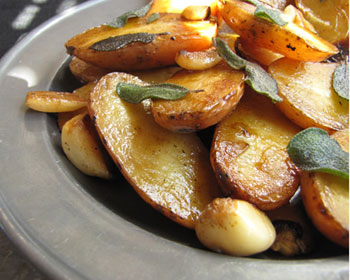 If you listen to conventional wisdom, you might think roasting is the only way to go when it comes to cooking fingerling potatoes. Now, I am usually the poster-girl for roasting (potatoes or anything else), and I’d like not to be burned at the stake for potato heresy, but I think fingerling potatoes are usually better braised or simmered, or, yes, boiled—any method that involves a little liquid.
If you listen to conventional wisdom, you might think roasting is the only way to go when it comes to cooking fingerling potatoes. Now, I am usually the poster-girl for roasting (potatoes or anything else), and I’d like not to be burned at the stake for potato heresy, but I think fingerling potatoes are usually better braised or simmered, or, yes, boiled—any method that involves a little liquid.
I hate to generalize, because there are, in fact, many different varieties of fingerling potatoes. Fingerlings themselves aren’t a variety, but more of a type of potato, defined by their size and shape—small, knobby, and elongated. Their flavor is usually rich and concentrated, but the color of their skin and flesh, as well as their starch content, can vary quite a bit from variety to variety. (Popular varieties include Russian Banana, Purple Peruvian, Ruby Crescent, and French Fingerling.)
The varying starch level is why some fingerlings lean towards being fluffy and dry (like a Russet potato), while others have creamy or waxy flesh (like a Red Bliss potato). Unless you cook with the same variety a lot, it’s hard to always know exactly what you’re getting at the store (or the farmers’ market) or how it will behave in the dry heat of the oven. While I’ve had bad experiences with Russian Bananas over-drying when roasted, I’ve never had a fingerling that wasn’t perfectly delicious when cooked with a wet-heat method.

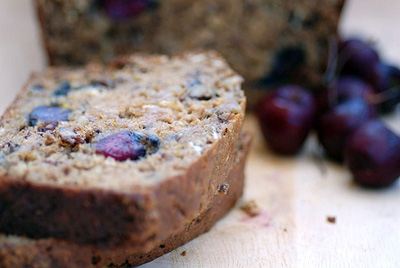 I always crave banana bread -- moist, tender, nut studded slabs with plenty of butter on top. I don't always crave the calories that come with it. That's why I have been experimenting with a creating a healthier, reduced fat banana bread that will keep both tummy and my hips happy. I have succeeded.
I always crave banana bread -- moist, tender, nut studded slabs with plenty of butter on top. I don't always crave the calories that come with it. That's why I have been experimenting with a creating a healthier, reduced fat banana bread that will keep both tummy and my hips happy. I have succeeded.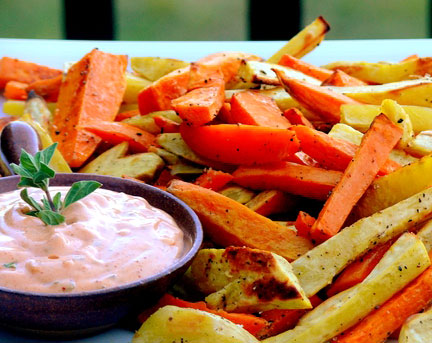 I came home from the market the other day and I had bags of acorn squash, butternut squash, parsnips and obviously the sweet potatoes and yams you see here.
I came home from the market the other day and I had bags of acorn squash, butternut squash, parsnips and obviously the sweet potatoes and yams you see here.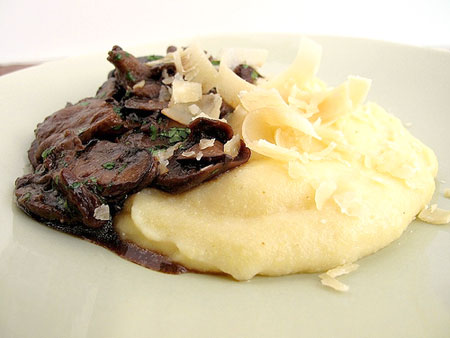 Cornmeal is a staple foodstuff in the cuisines of many cultures throughout the world, cooked in nearly similar ways. It can be found in South America, Africa, Eastern Europe, and the South where it is known as grits. Cornmeal is made from the grinding of dried corn kernels that have had the husk and germ removed, which gives it greater shelf life.
Cornmeal is a staple foodstuff in the cuisines of many cultures throughout the world, cooked in nearly similar ways. It can be found in South America, Africa, Eastern Europe, and the South where it is known as grits. Cornmeal is made from the grinding of dried corn kernels that have had the husk and germ removed, which gives it greater shelf life.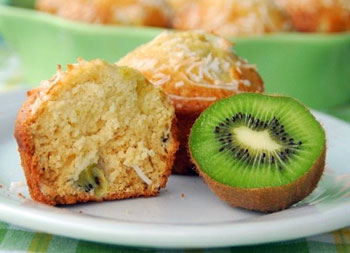 Just when I thought fava beans had a lot of names, along comes the kiwifruit (kiwi)
Just when I thought fava beans had a lot of names, along comes the kiwifruit (kiwi) 
